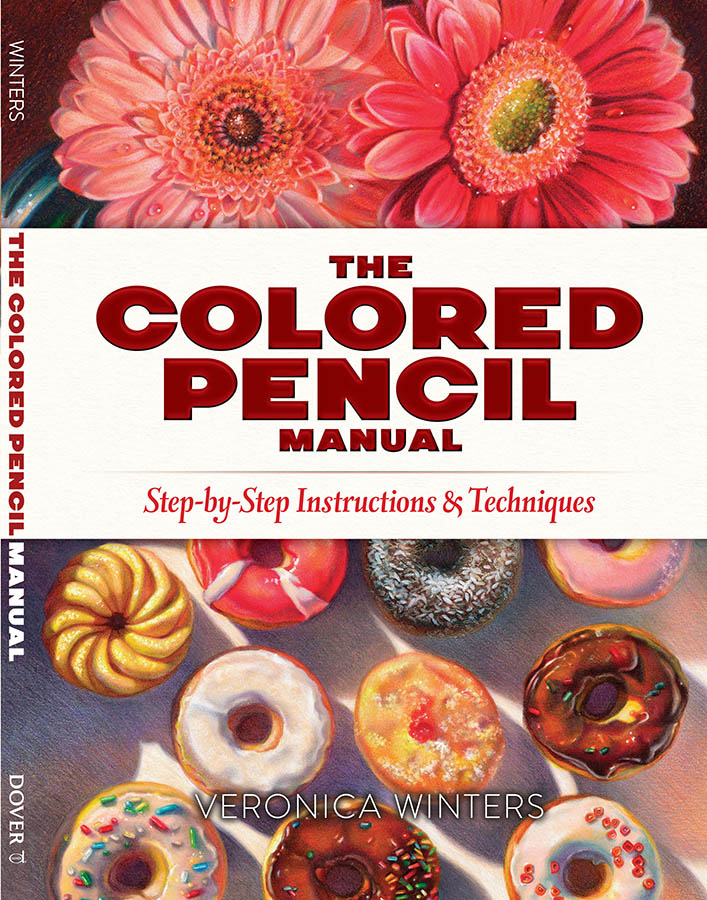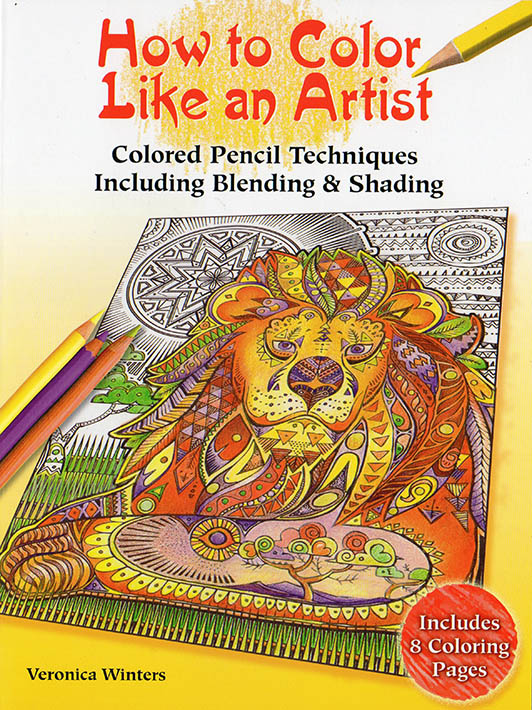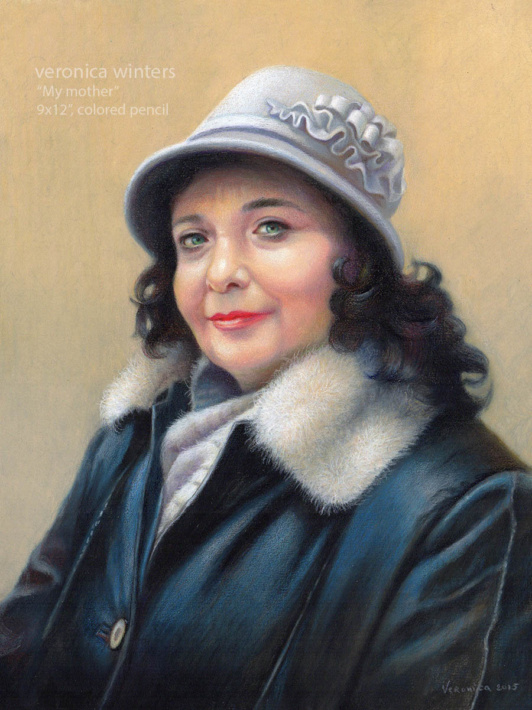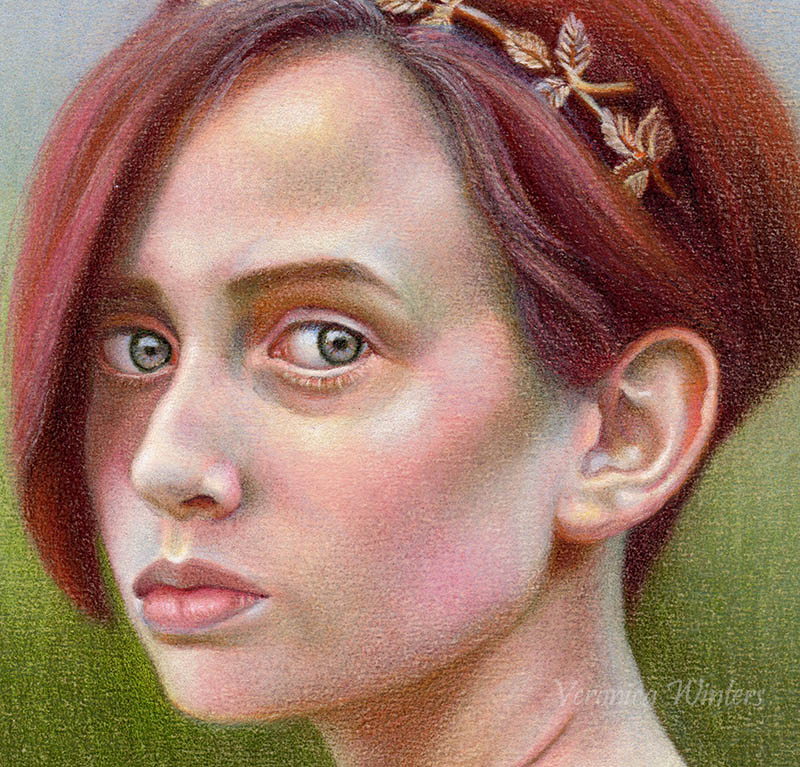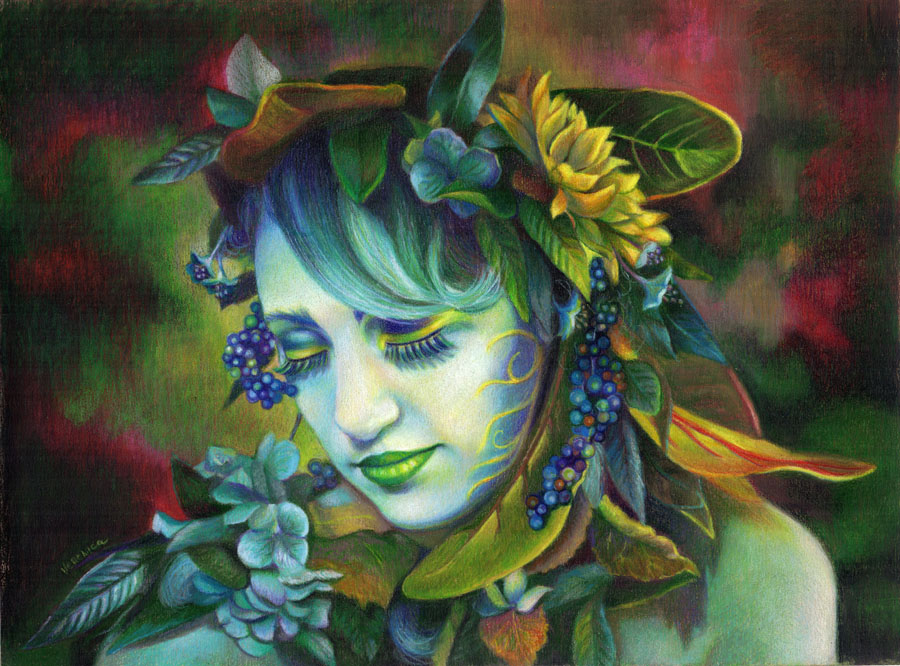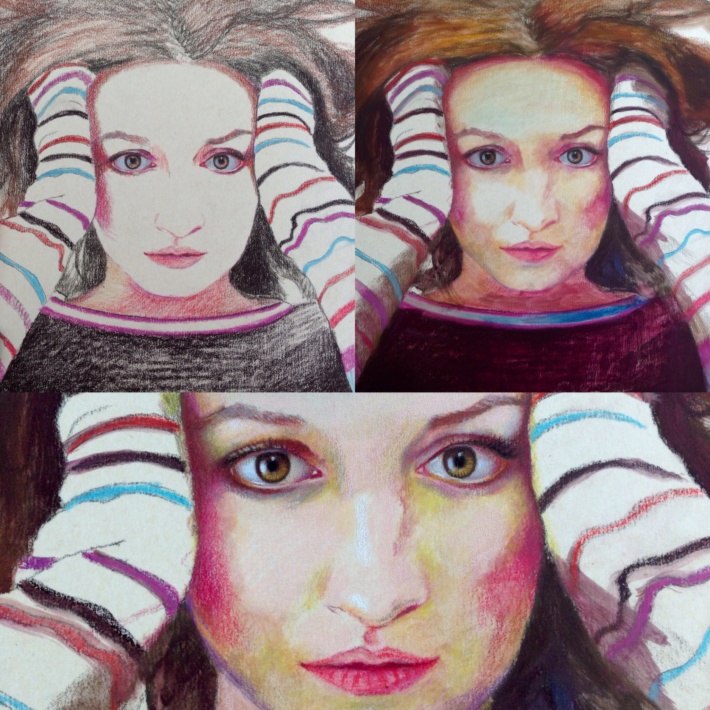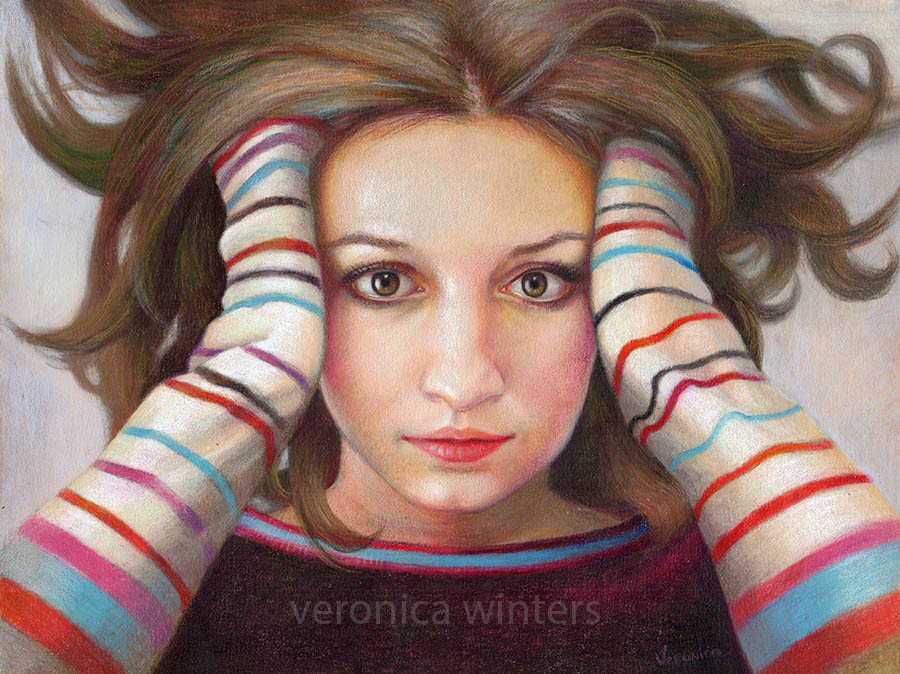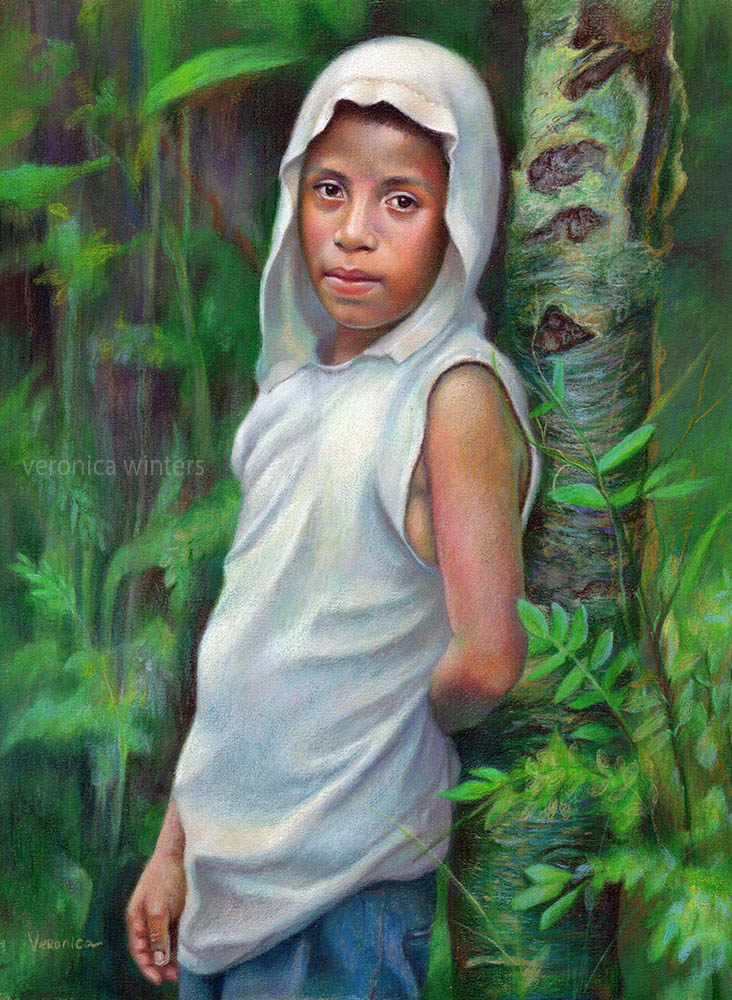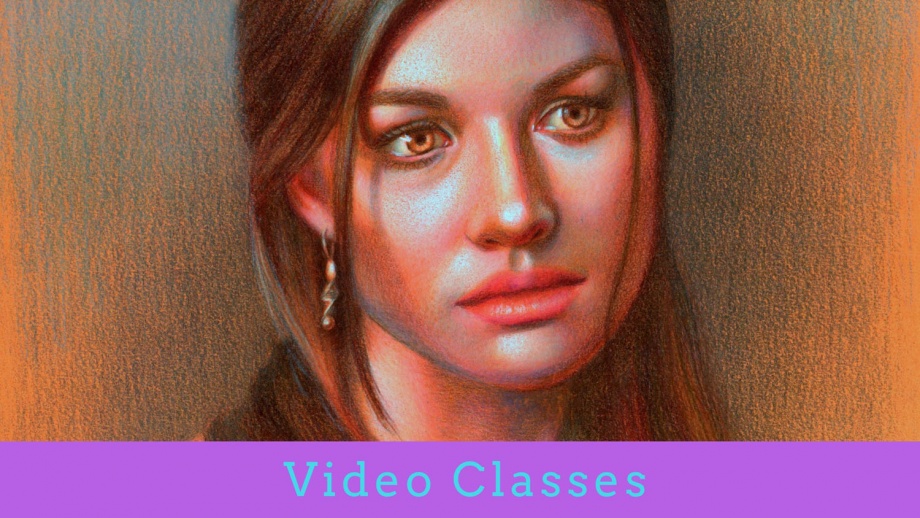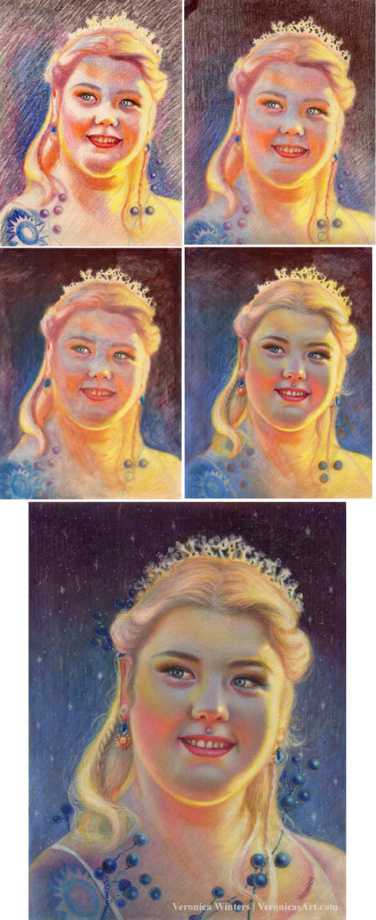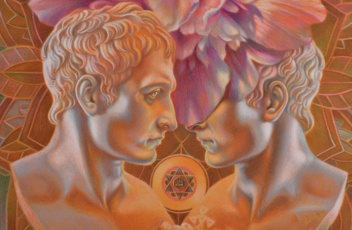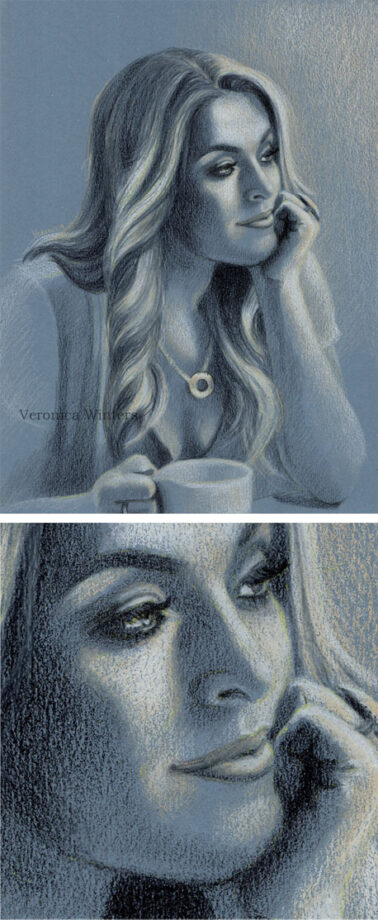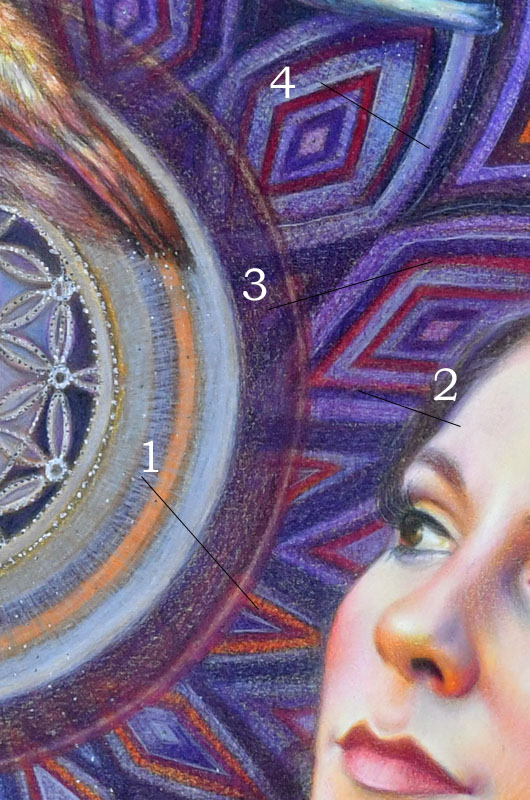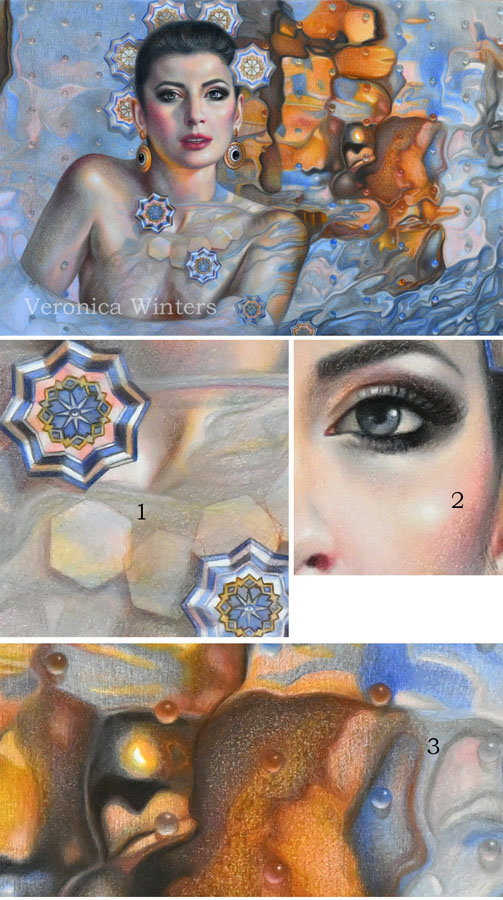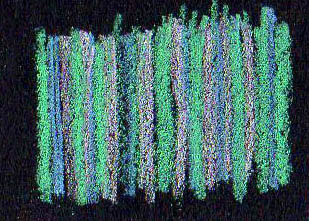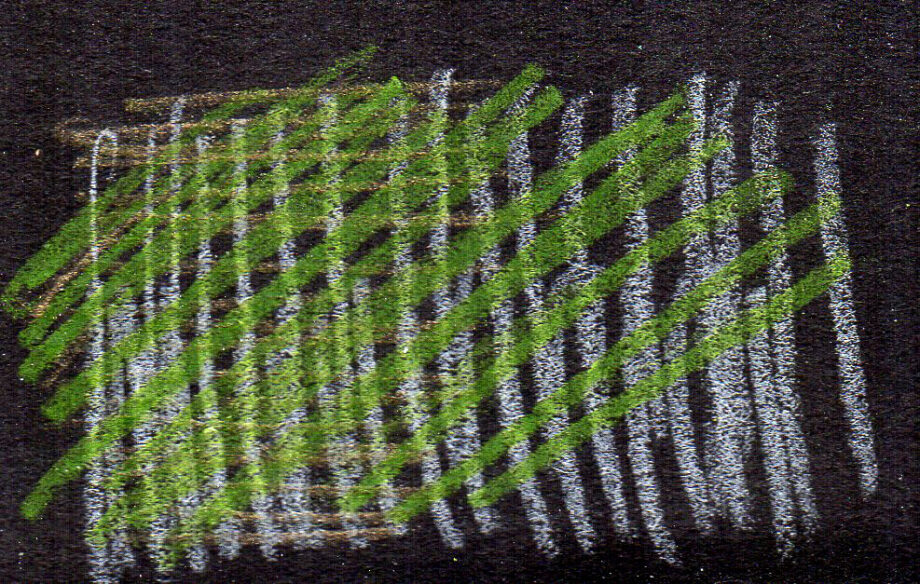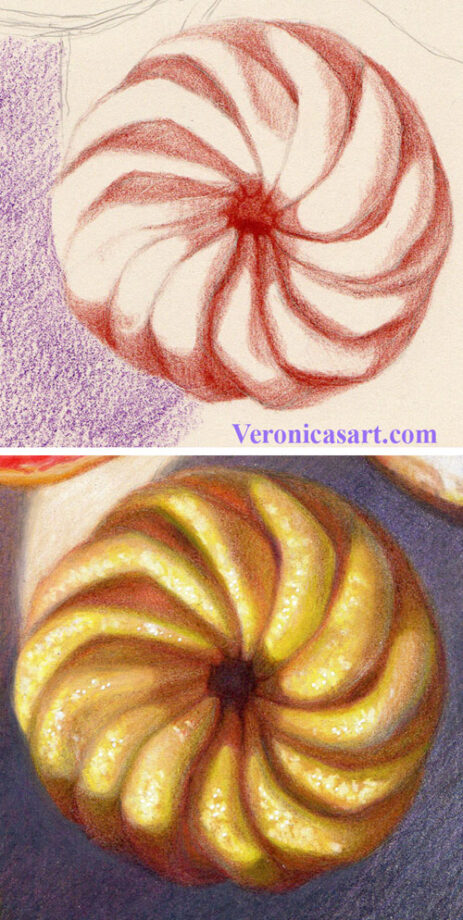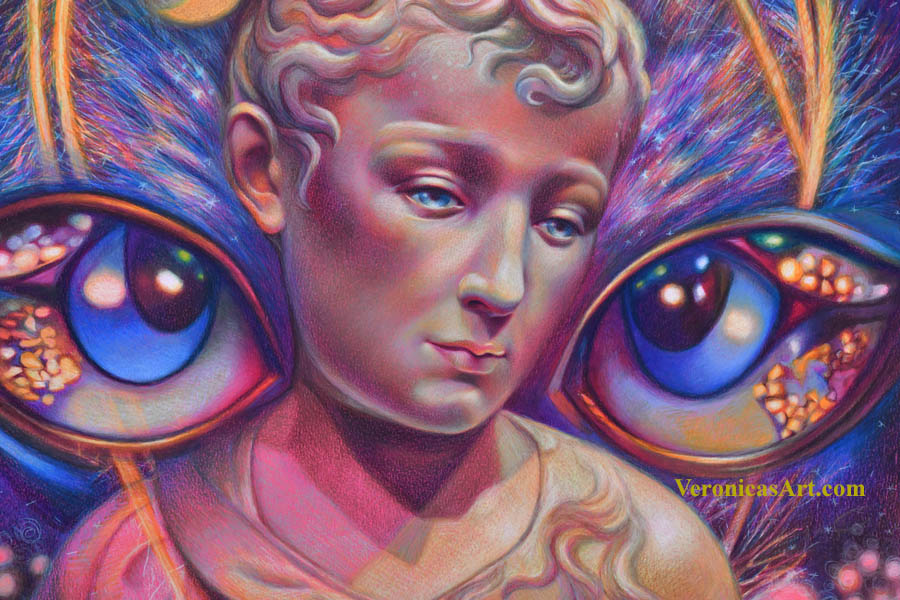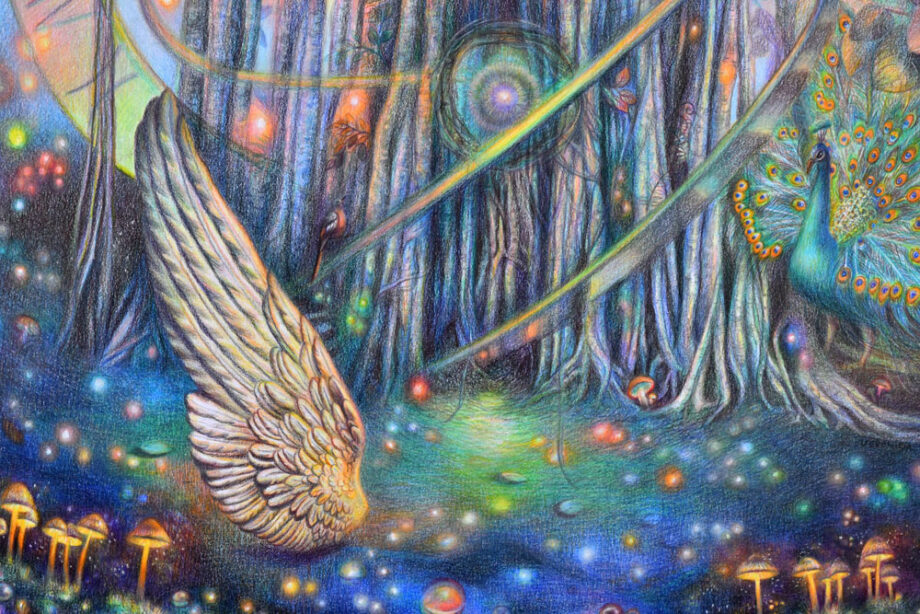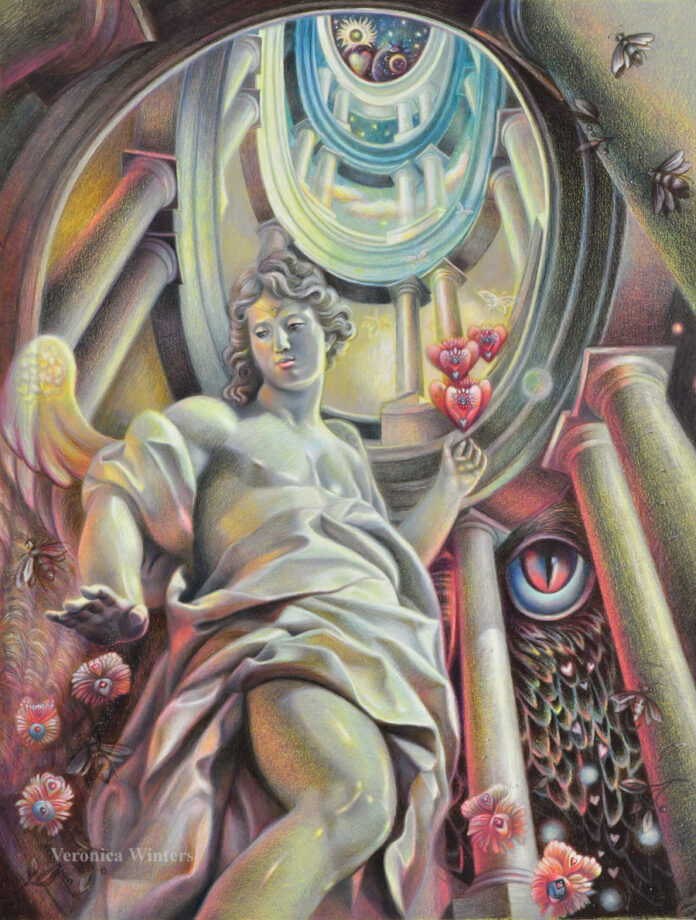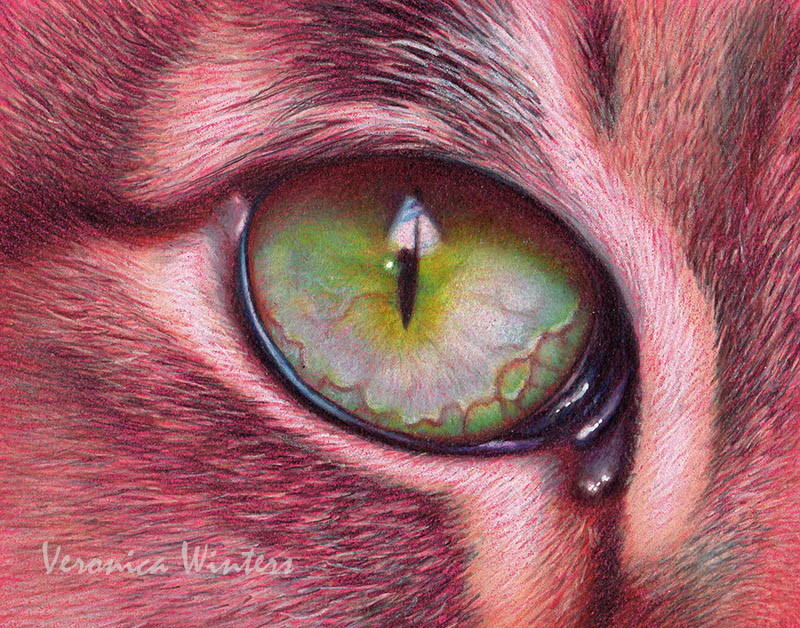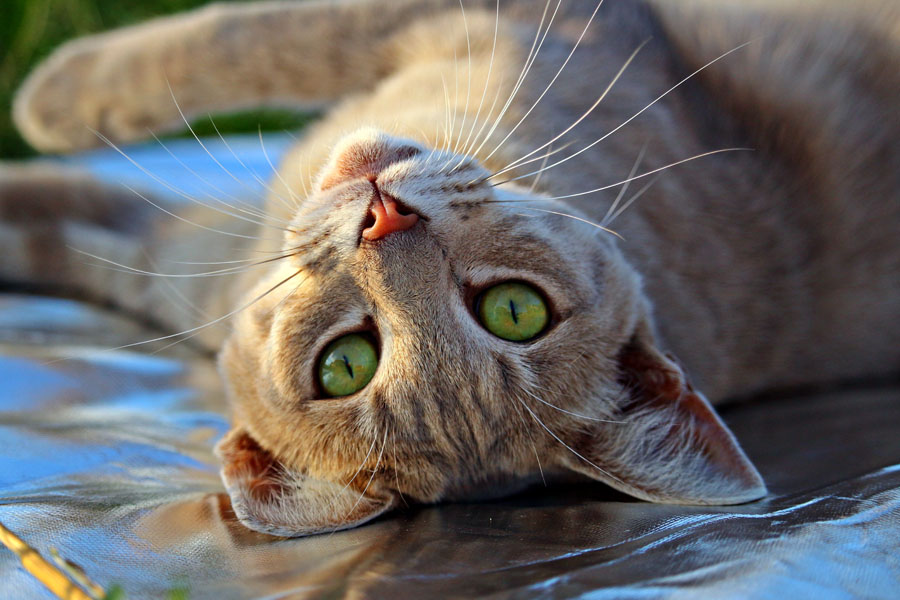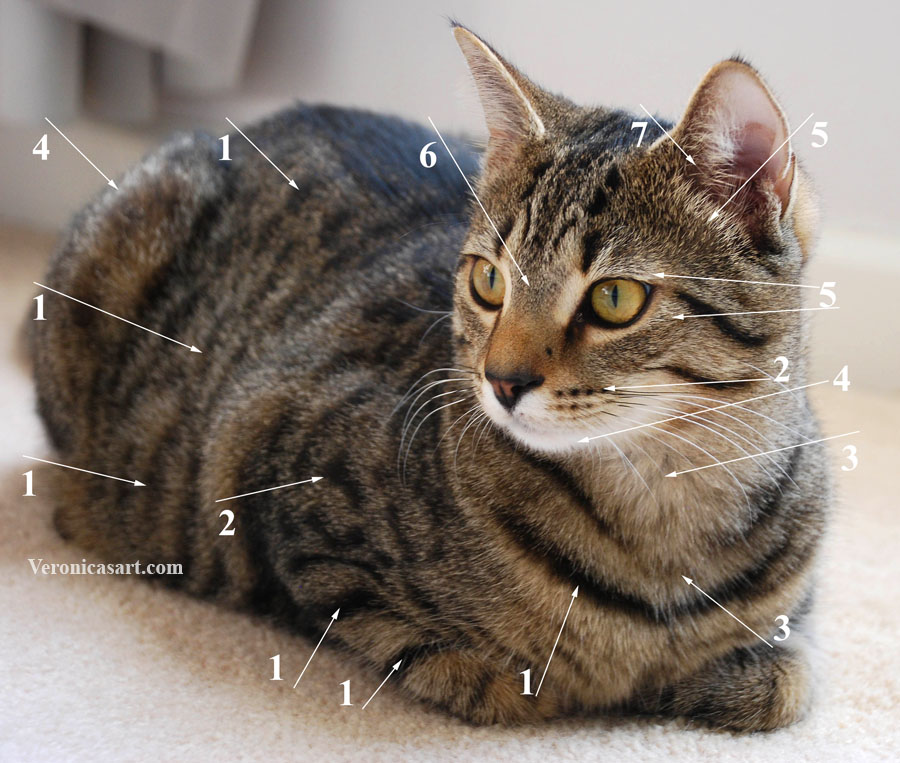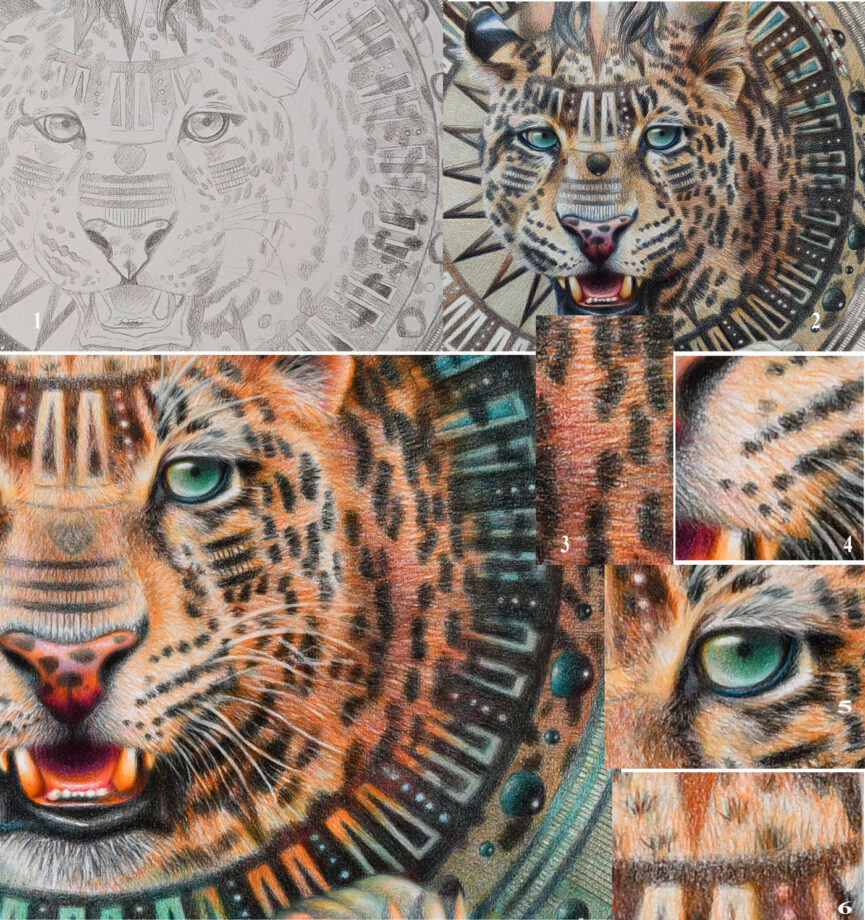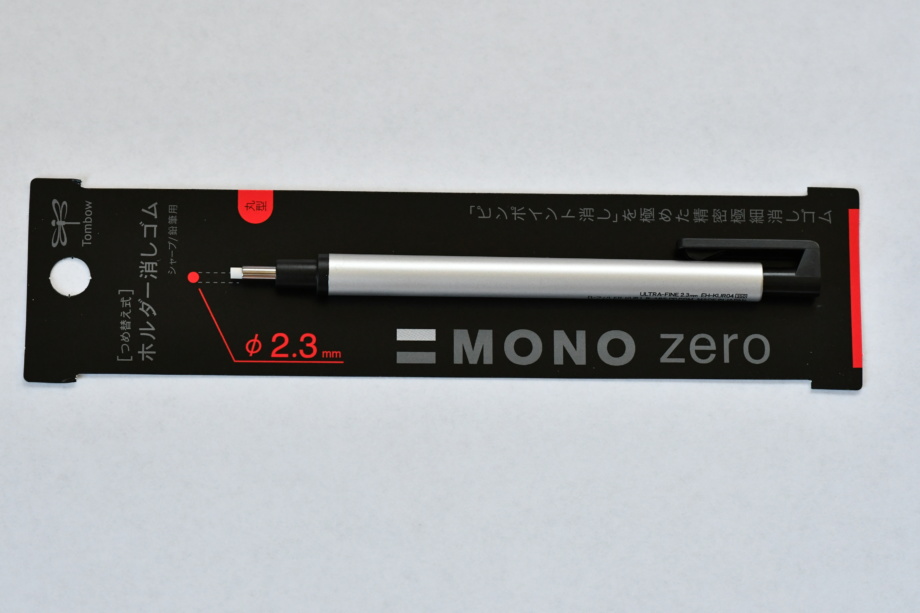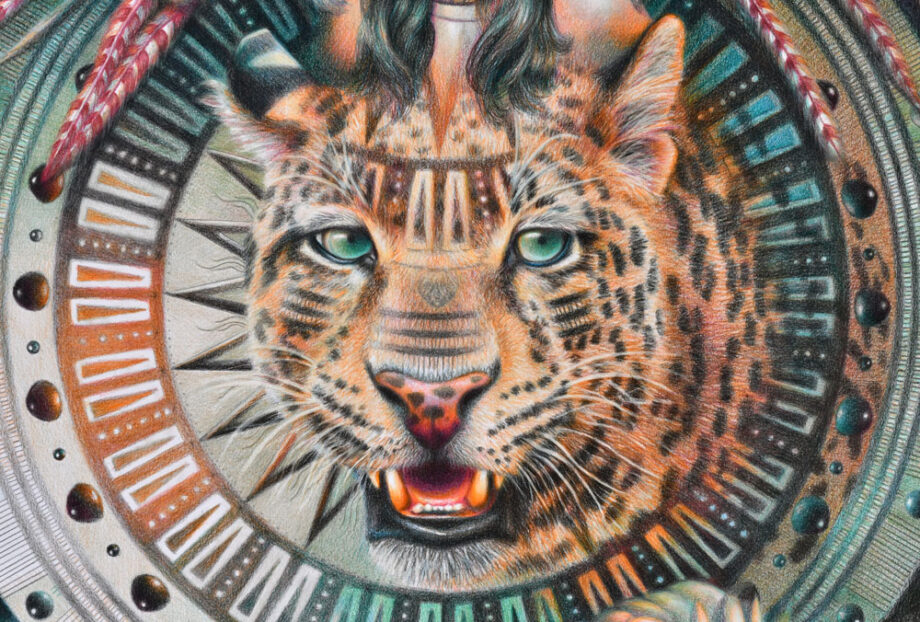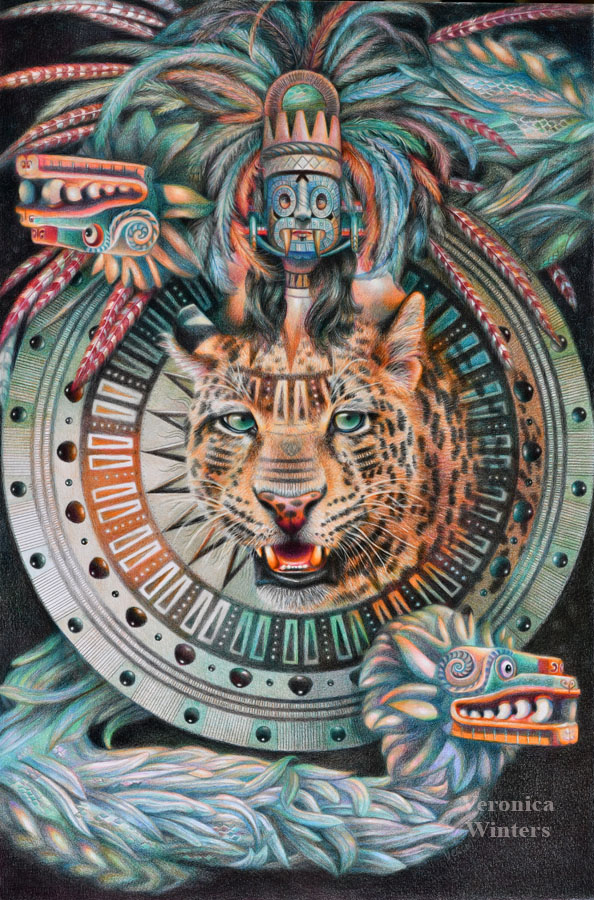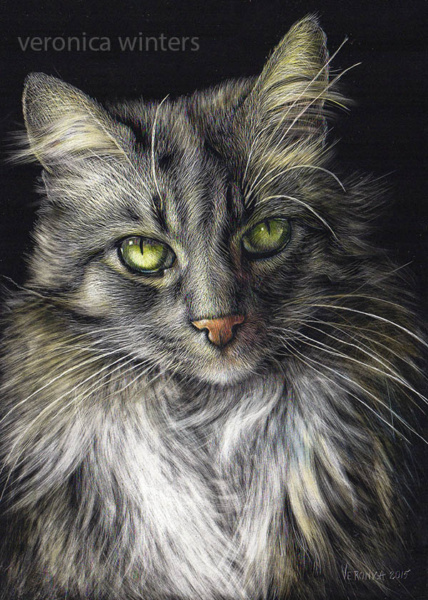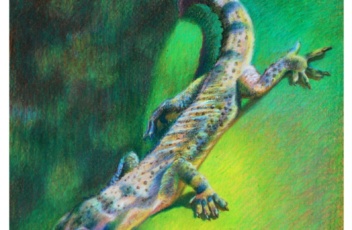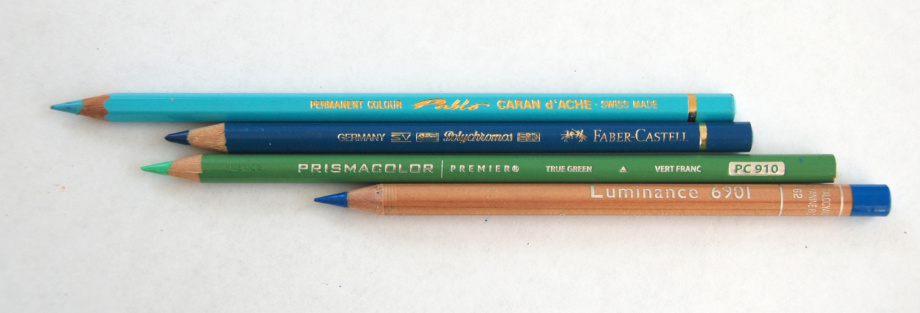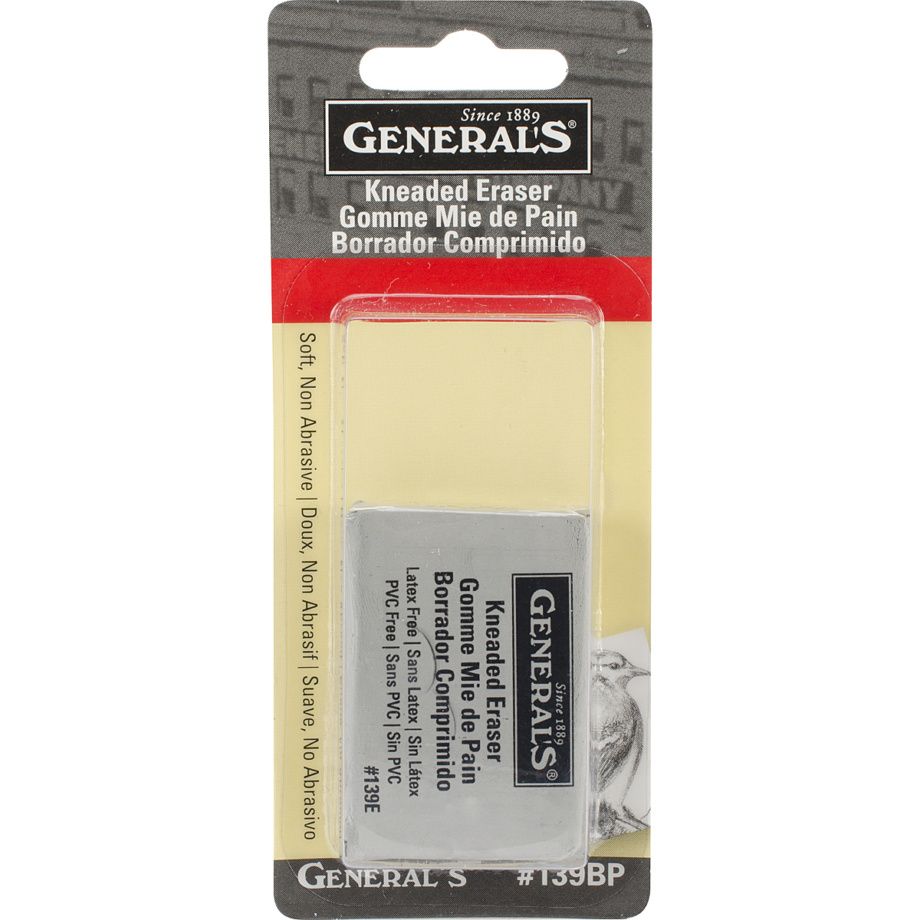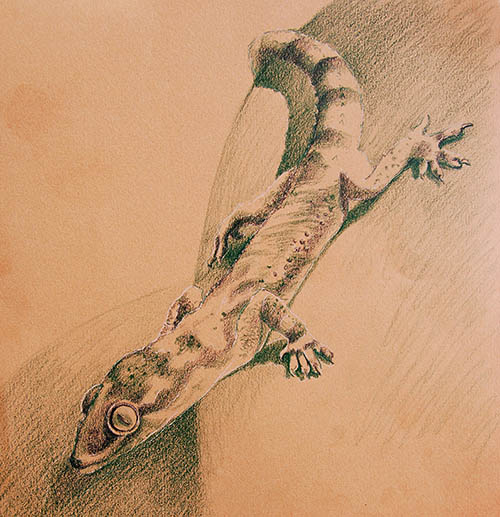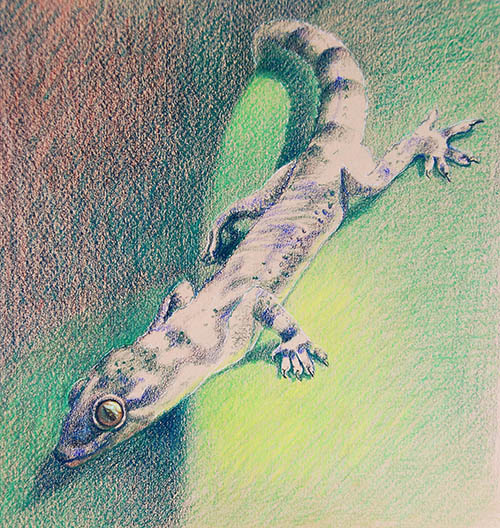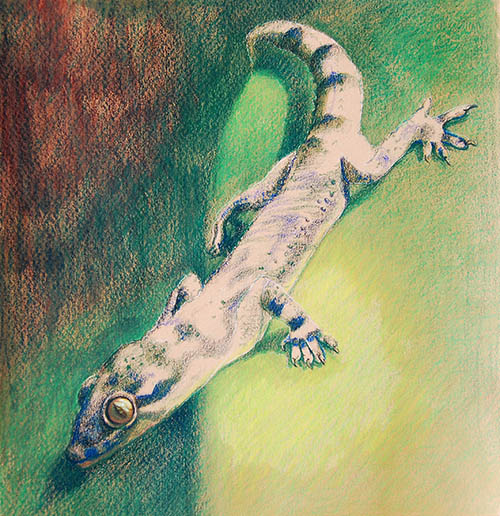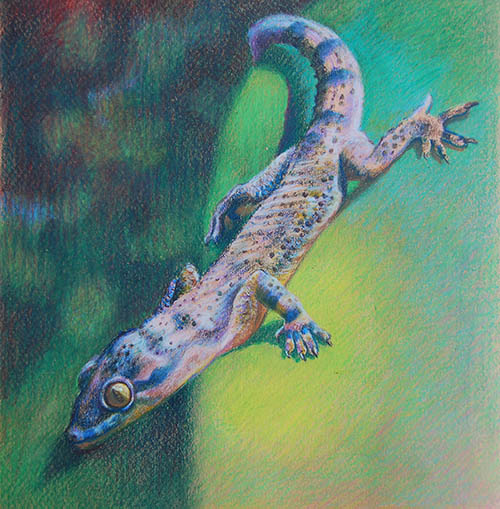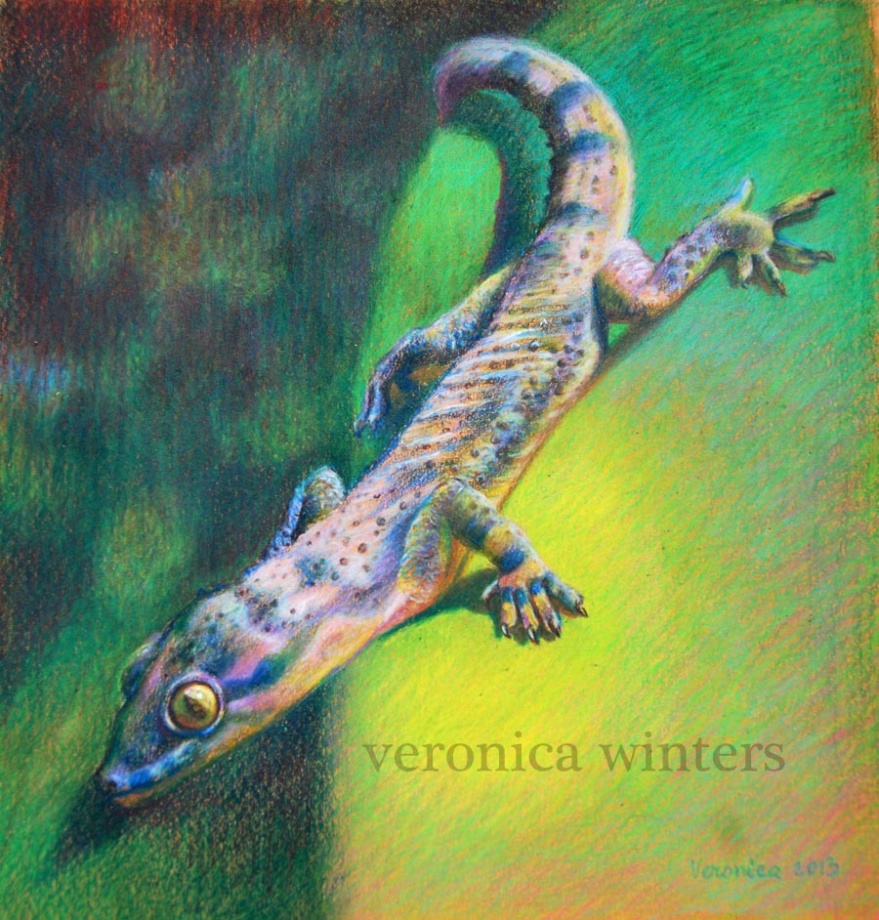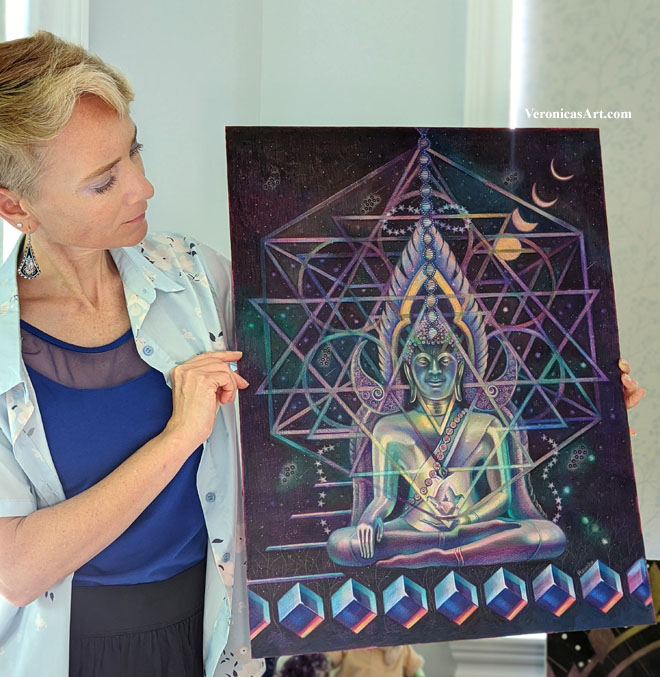
When you begin realistic drawing in colored pencil, the artistic aim is to copy what you see in front of you or your reference. Beginners in colored pencil drawing pay attention to small things like details and textures, and they’re important. However, they become truly important only when the basic drawing is in place. If you begin shading one spot and forget about the rest of your composition, you might end up having a colored pencil drawing that has no consistency or unity in color harmony and composition. In this article, I’d like to share a few strategies I often employ using color harmony to create mood and atmosphere in colored pencil drawing. Let me give you some ideas on how to use color harmony in colored pencil drawing so you can discover your unique approach to drawing.
Another extensive article on colored pencil portrait drawing and the use of values and color: https://veronicasart.com/realistic-colored-pencil-portrait-drawing-guide/
Color wheel use in colored pencil drawing
While the color wheel isn’t everything for colorful pencil drawing, you do need to know these basic definitions and color triads.
Definitions:
- Hue – means color. Red, green, yellow, etc.
- Value – means how light or dark the shading is.
- Chroma – is the color’s strength or color intensity. Colors can be super intense or muted.
- Value – the lightness or darkness of a color.
- Color Intensity – the saturation or purity of a color.
- Neutralized color – the color with less intensity that’s either grayed down or mixed with its complement.
- Local color – the natural color of an object as it appears in daylight (green of the cucumber or blue of the blueberries). Art students see only local colors in objects rather than the colors of light and reflections.
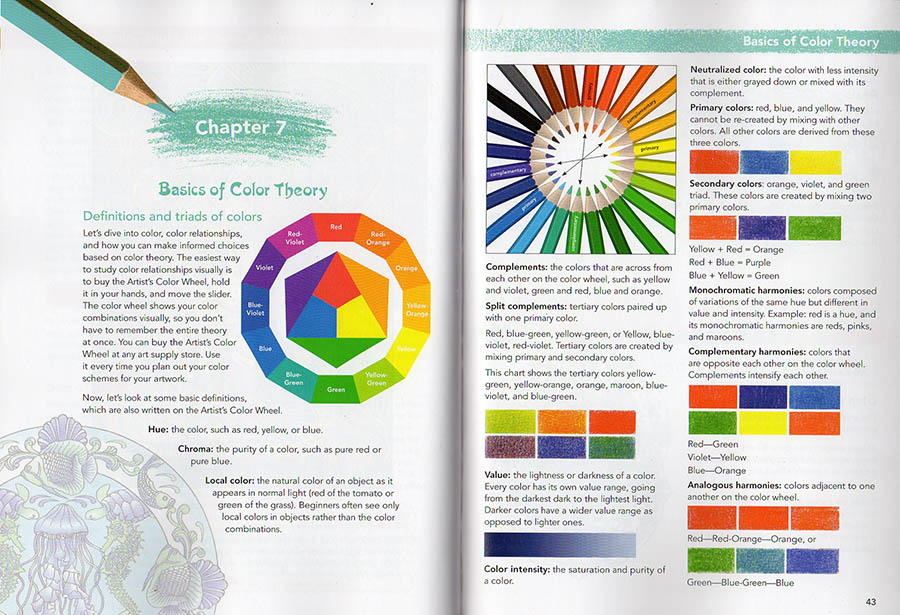
I know it’s difficult to remember all the definitions, and I strongly recommend buying a color wheel because it’s visual. You can rotate the dial to see complementary colors, triads, etc. I still use it every time I design my colored pencil drawings. You can buy it at any art supply store or on Amazon.
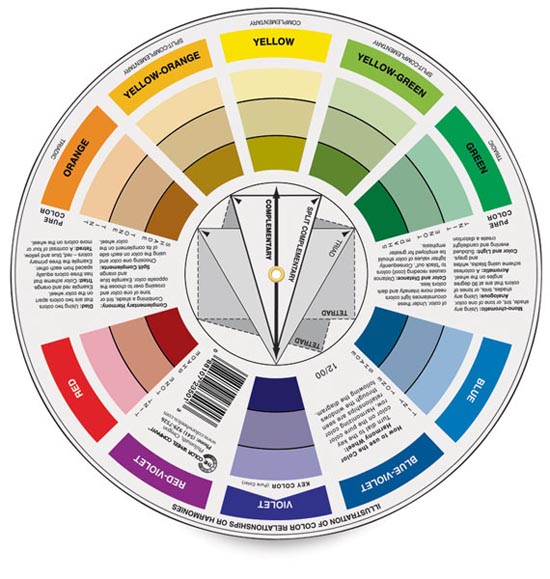
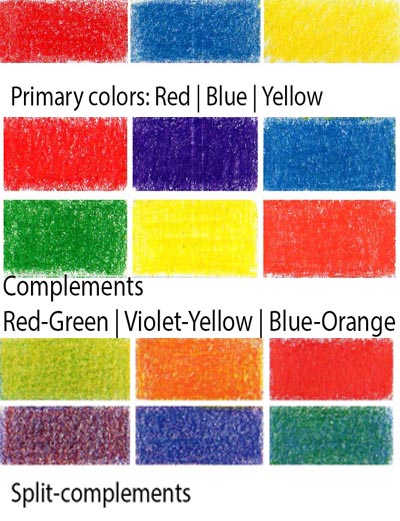
- Primary colors are red, blue, and yellow. If you put all three primary colors (making them equal in intensity), your colored pencil drawing will be screaming with too much color.
- Secondary colors are orange, violet, and green. They’re mixed with two primary hues.
- Complementary colors in colored pencil drawing are opposite each other on the color wheel. Complements intensify each other. You don’t want to have all the complements in one drawing for that reason. Red-Green, Violet-Yellow, Blue-Orange.
- Analogous colors in colored pencil drawing are hues adjacent to one another on the color wheel.


- Triadic colors in colored pencil drawing –

- Split complementary colors in colored pencil drawing – are the colors on either side of a color’s complement. For instance, if your primary color is blue, your split-complementary colors would be yellow-orange and red-orange. Violet’s complementary color is yellow, and its split-complementary colors are yellow-green and yellow-orange. Blue-purple and red-purple are split complementary colors. Red and green are opposite each other on the color wheel, so red-orange and blue-green are split complementary colors. Split-complementary colors seem to be less color-intense.
- Tetradic colors in colored pencil drawing are a color scheme that uses four colors that are equally spaced around the color wheel. The four colors are made up of two sets of complementary colors, which are also known as double complementary colors. To be honest, I don’t think this color scheme is very useful, although you can try it, of course. I think it’s too many bright colors competing for attention unless you use a single dominant color in this color scheme.
- monochromatic color harmonies- colors composed of variations of the same hue but different in color intensity and value. Red is a hue. Its monochromatic variant is pink and maroon.

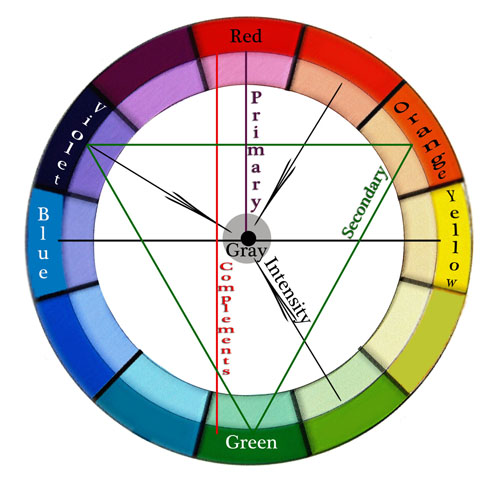
Color Intensity – the saturation or purity of a color. Neutral colors are mostly browns, but
Neutralized color is any color with less intensity that’s either grayed down or mixed with its complement.
Colored pencils don’t mix to grey unlike oil, acrylic and watercolor paint. Therefore you need to use grey colored pencils to neutralize the color so that there are 1-3 dominant colors in the picture, and the rest are neutralized. By using the grey colors you create selective focus as well as beautiful, subtle color variations and texture. In the closeup drawing below you can see grayed down fabric. I shaded with some bright hues first and then added light greys over them.
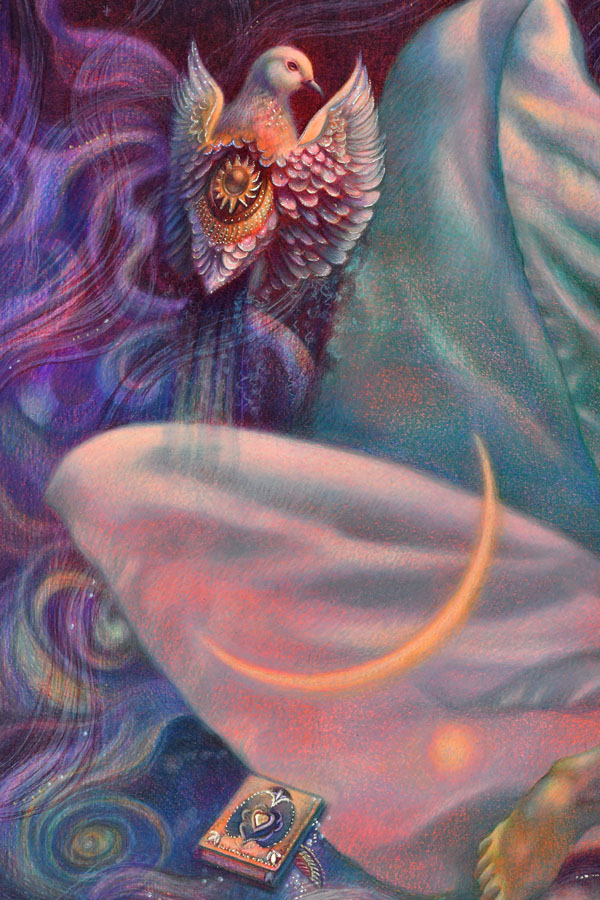
How to use color harmony to create mood and atmosphere in colored pencil drawing
I’d like to share 5 drawing tips on using color harmony to make your colored pencil drawings more realistic.
1. Consider overall color harmony design in your colored pencil drawing
Decide on the overall color theme of your colored pencil drawing. Is it light or dark? Is it monochromatic or in full color? How do you decide? Look at your main reference to see the dominant color. Make that particular color your main focus in colored pencil shading. Everything else should be less color intense to support the dominant color. The color harmony you decide on may not be unique to you, but you make it unique by choosing the unusual point of view, stroke, or subject. Your choice of a dominant color(s) and contrast determines the mood in the drawing. For example, light blues and pinks look serene, while deep reds and blacks make us feel very different.
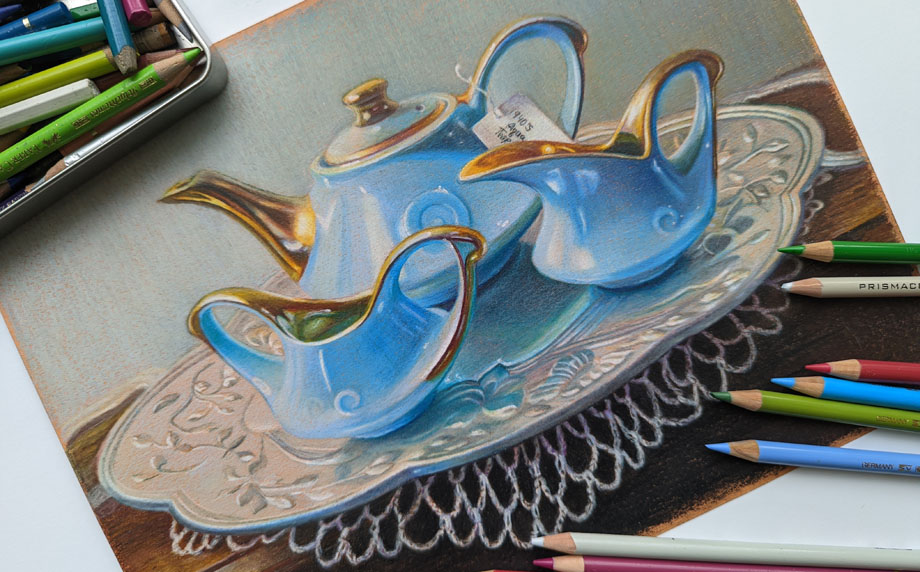
2. Test your colors to decide on the best color harmony
Once you decide on your leading colors for your drawing, look at your colored pencils to pick the colors from that color family.
Test your colored pencils on your drawing paper to have consistent color harmony and shading. If you see lots of blue in your reference, test all your blues to see which ones look similar to your picture. Start testing these colors right next to your reference, and you’ll notice that some colors are off and don’t look right as your main hue. If you have a big box of colored pencils, you have many similar colors. You don’t need to use them all in one drawing because you can adjust your pencil pressure drawing in one blue to get a range of blue tones that’s similar to several various colored pencils.
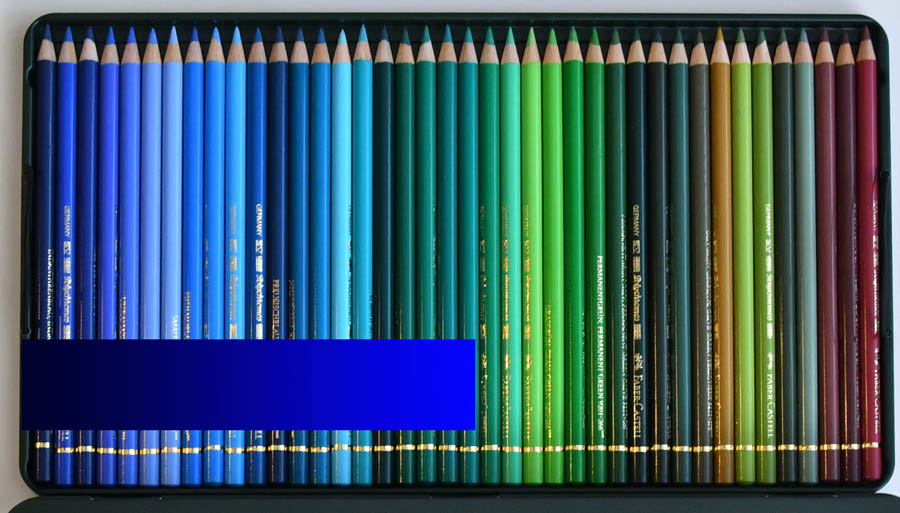
3. Keep it simple to create consistent color harmony
Shade all shadows in one color first. Students love to jump around the picture, using all possible colored pencils to draw the portrait. Instead, pick one color to shade all your shadows first. Colored pencil shading in one color is key to creating volume in portrait drawing.
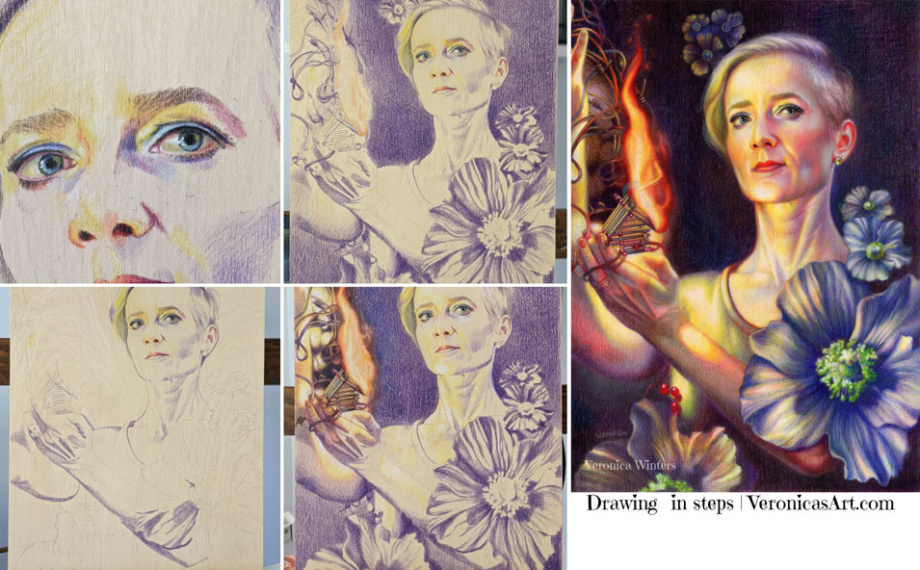
You can make personal colored pencil drawings by focusing on a familiar subject that has unique story line or idea. For example, we all know how the human heart looks like but by designing my own composition and color scheme, I make my colored pencil drawing look different from everyone else’s.
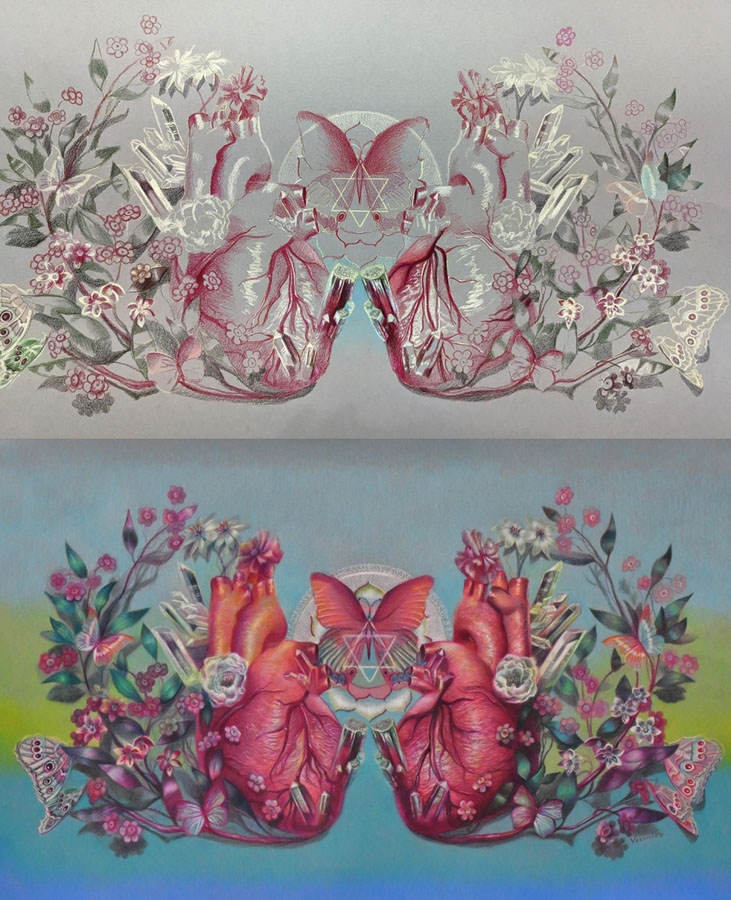
4. Add more tested colors to develop contrast in your color harmony
Most colors are warm and cool. This includes reds, greens, blues, and even greys. Some are neutral, like browns. You must consider how light or dark they are. You can’t create a very dark shadow using light pink. You can’t shade around the highlight with a dark blue ( because dark blue is too dark for shading in the light).
Build contrast by having a range of tones in your colored pencil drawing going from very light colors to very dark ones. Of course, not all references call for it but keep it as a guideline for your art and colored pencil shading.

5. Look at your colored pencil drawing from a distance!
You lose all the details by looking at your art from a distance. You do see the inconsistencies in color, awkward shapes, weak shadows and highlights, or undefined edges.
If you consider all 5 rules, you will be able to draw a photorealistic colored pencil drawing that has unity in color.
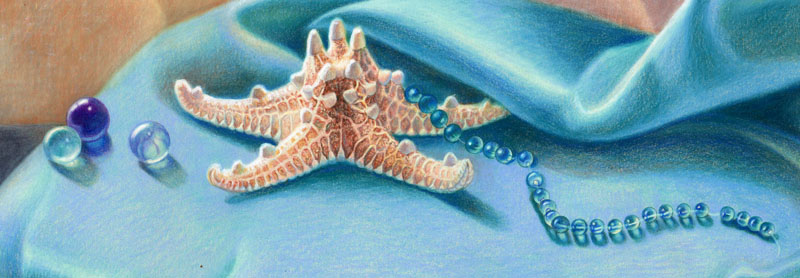
On using color harmony to create unique and personal colored pencil drawings
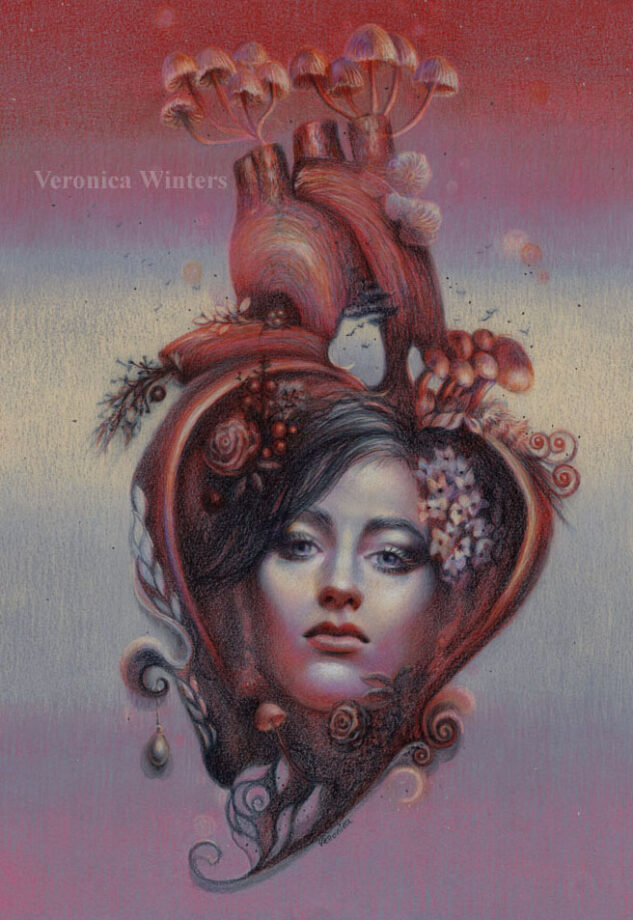
I’d like to share my approach to using color harmony to create unique and personal colored pencil drawings. I think it may be useful for advanced artists interested in colored pencil art.
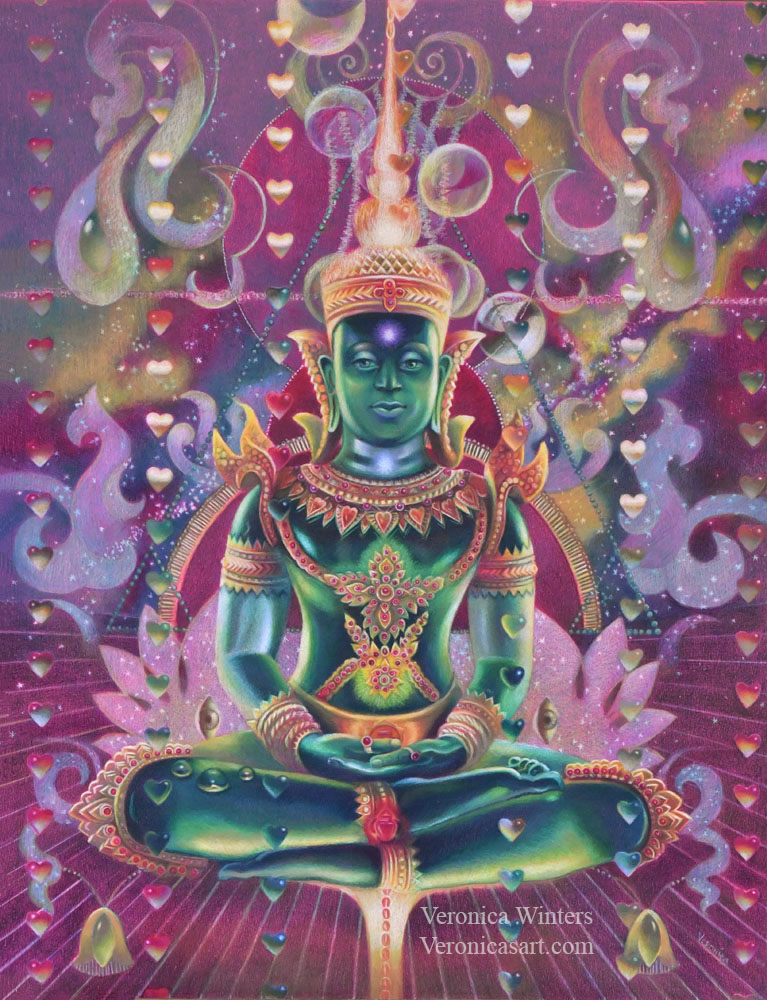
#1 Start with a good idea
Have a good idea in mind of what colored pencil drawing you want to create. The idea is a visual story in color, subject, or light. It doesn’t have to be the figure. It could be one object displayed in a unique light, rotation, or point of view in the artist’s drawing. This is the artistic vision and interpretation of a “boring” object that becomes fun to look at because of your unique interpretation of it. You can train yourself to see the world more creatively by improving your photography, reading, looking at art masterpieces, and contemporary art.
I have a folder where I save art to learn from done by other artists. I study unique color choices, composition and subject. Sometimes, the subject isn’t new but the approach to drawing it is totally unique.
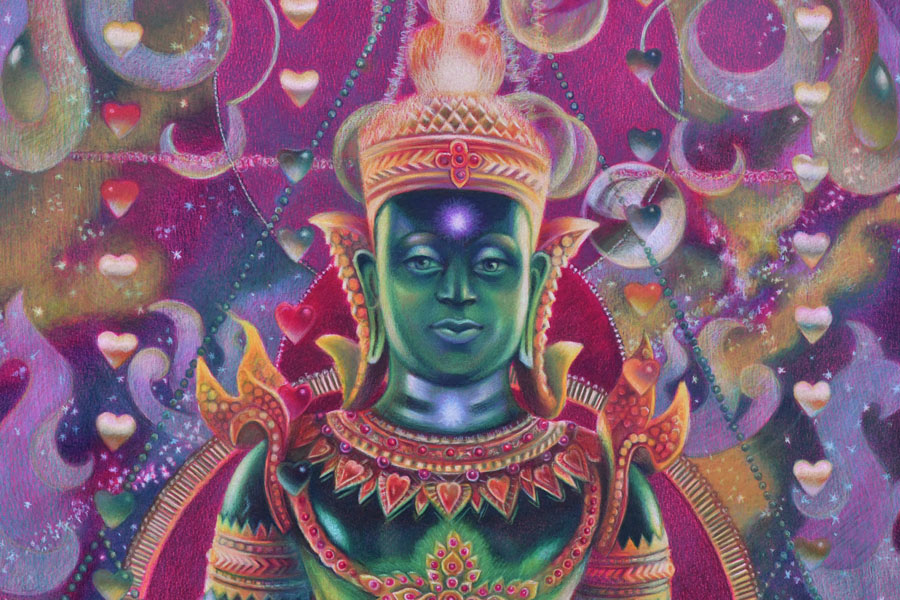
My idea starts from my imagination, reading, travel, emotions and thoughts. One day I imagined a seated figure with light passing through his body. I also imagined a rain of hearts above the figure. I made notes of this idea on my phone…I wanted to depict energy, chakras and the colors of the Universe in this colored pencil drawing of Buddha. I came home and started thinking of my references to illustrate this concept.
#2 Pick high-quality references for realistic colored pencil drawing
At first I wanted to paint a real person but I had no references of the pose. So I browsed pictures from my Thailand trip folder. I saw so many beautiful Buddhas and palaces there…And this green Buddha was made of semitransparent stone that looked like glass.
You need to pay attention where your references come from. Sometimes you can’t enter competitions drawing from someone else’s photo. Other times, you don’t have an emotional connection to the picture which is not yours. Or you need to get a photo release that takes time and effort. Personally I try to use my references but when it’s impossible to do, I go to Pixabay to find inspiration and you can too! Pictures are of high-quality and free for commercial use. The only problem with them is that they’re Photoshoped heavily. You must see if you have enough information to draw from as most filters remove warm/cool contrast from pictures.
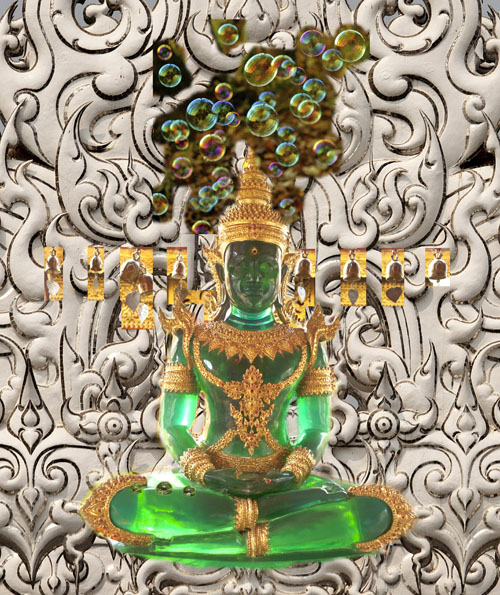
Picking the right references is not enough. They need to “connect” with each other in light and color temperature.
I always design my images around the main subject. I place it first and put smaller shapes around it. In this example, the largest shape is Buddha’s image, and my design revolves around the figure. I used the ruler to make straight lines and place the hearts. I cut a heart-shaped template to have a consistent shape in my colored pencil drawing. I use Photoshop to plan the design as much as possible by layering and moving elements around the main figure to arrive at a perfect composition.
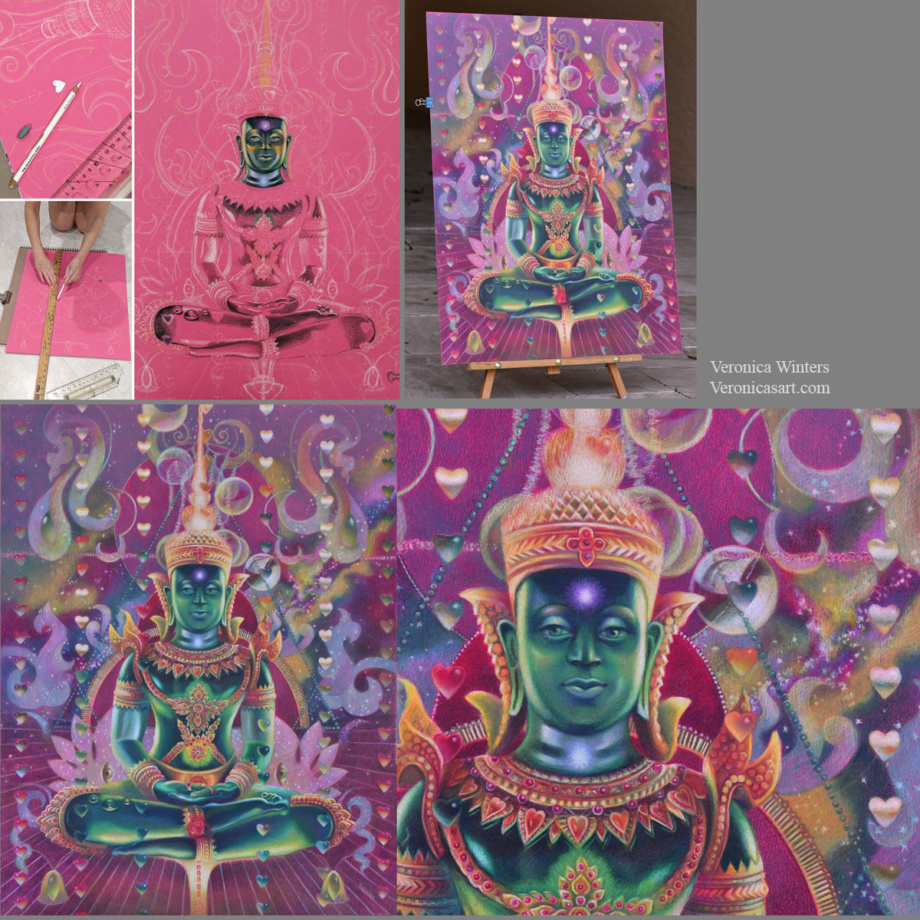
#3 Decide on your color harmony in colored pencil drawing
This drawing has quite a sophisticated color scheme. My color harmony is a combination of cool red, green, and cool, bluish white.
My tip is to focus on picking 1-2 main colors in your color harmony. It doesn’t mean that you use just two colored pencils for that. It means that you pick the basic scheme, say, ‘yellow-purple’ and design your colored pencil drawing in these colors. The rest of them should be grayed down or become less prominent to support the main hues.
#4 Pick the right toned paper for your specific color harmony
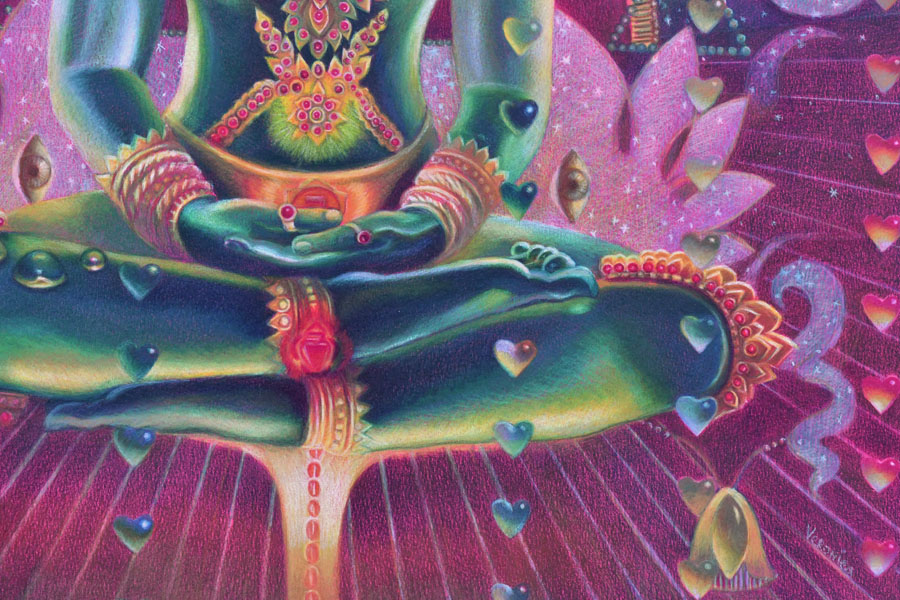
I love drawing on Canson Colorline paper because it comes in a variety of bright colors. The texture is not overwhelming, and colored pencils become very vibrant when drawing on this paper. (I’m linking to this paper on Amazon, but I find that DickBlick Art Materials online store has much better choices. Amazon sells a lot of fake products positioned as real ones. Be careful. Buy your art supplies from established shops. Read one-star reviews to understand if the products are fake or not. I bought several art supplies that were listed with professional images, yet the received supplies were knockoffs from China.
Once you have picked your main color scheme, say ‘yellow-purple’, look at the color of your drawing paper. In general, don’t draw on yellow paper if your main color is ‘yellow’. Don’t draw on a purple drawing paper if your main color is ‘purple’. Pick the opposite color of paper (like green or orange) and test the colored pencils on it. Test a few colored pencils on it to see how vibrant or dull they are. Some colors may disappear on colored paper, and others would be super bright.
#5 Have consistent shading in your colored pencil drawing
Begin shading the shadows first using one color. Don’t jump around the picture with many colors. Pick one color and shade all the darks with it. Mark the highlights with white colored pencil (or reserve the space for your highlights if you draw on white paper). Lastly, shade the middle tones connecting the darks with the lights.
Shade with the softest colored pencils, filling in large areas. If you start working with harder colored pencils like Polychromos, it might be frustrating to fill in a large space. I save a lot of time and hustle for myself by drawing with the softest pencils like Prismacolor Premier and Luminance or Pablos, and then switching to harder pencils like Polychromos to work on the details in my colored pencil drawing.
Have fun creating your super vibrant colored pencil drawings with beautiful and unique color harmonies!
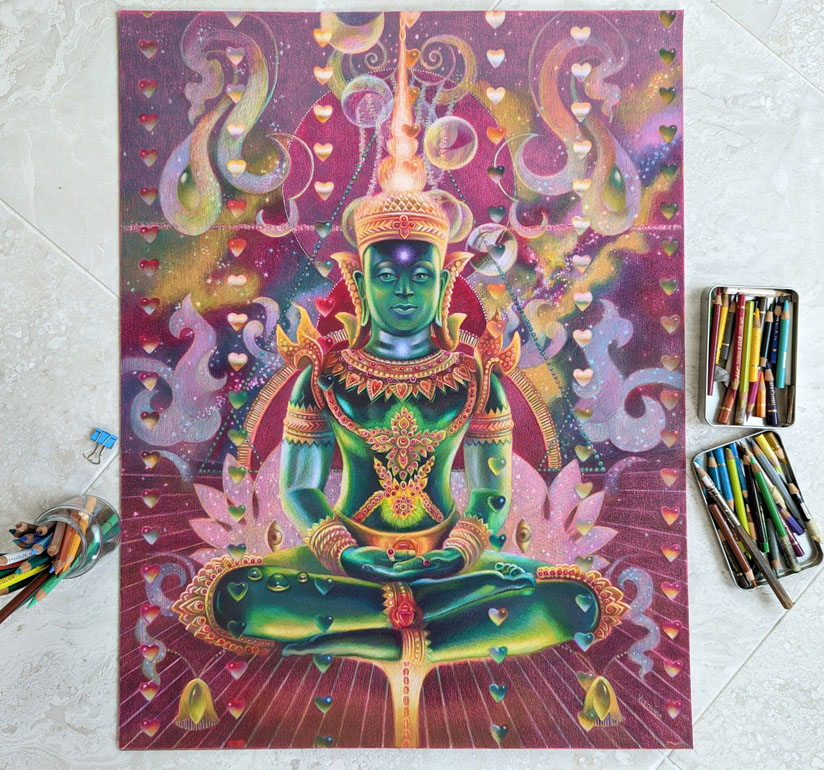
You can learn a lot more about color and color harmonies by taking my video course, where I explain the properties of color and how you can design your images around color. I share my secretfor picking a perfect color scheme for my colored pencil drawings every time.
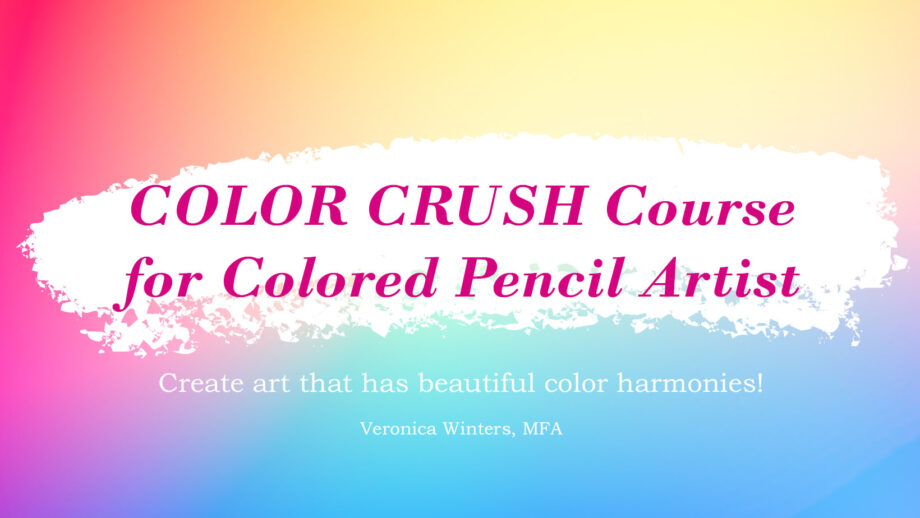
https://veronica-winters-art-school.teachable.com/p/color-crush-course-for-colored-pencil-artist-by-veronica-winters
Colored pencil drawing on Ampersand pastelbord
This board could be an alternative to drawing on colored paper, but you must consider the disadvantages of working on it with a colored pencil.
I like to experiment with different surfaces drawing in colored pencil, searching for the most archival support for my art. Since most people find the colored pencil work inferior to oil painting and even pastel painting, finding the right, archival surface takes the fear away from your clients who wish to buy your artwork otherwise.
This slightly sanded, colored pastelbord by Amersand is similar to the 800 grit Uart paper, which is great for soft pastel painting. Just like the Uart paper, the pastelbord has similar advantages and disadvantages to using it in colored pencil drawing.
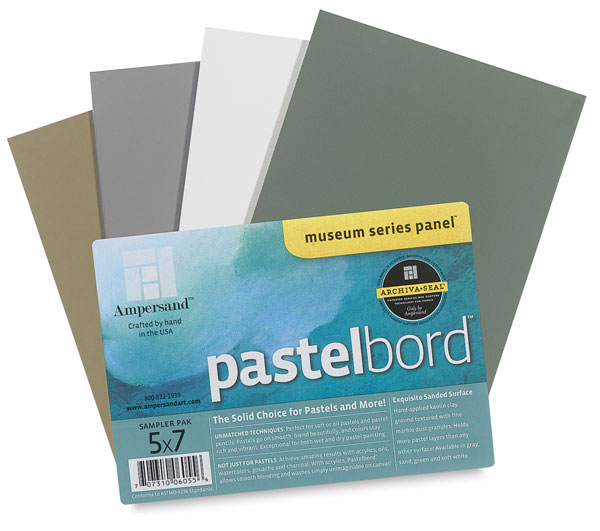
Advantages:
- Ampersand offers a nice variety of colors: sand, dark green, white, gray, and other neutral colors. It takes much less time to shade on a colored surface rather than on white.
- Artworks look vividly drawn on this board.
- This archival surface is durable. It doesn’t bend or crumble, stays flat at all times.
- It offers easy display without a glass. Just make sure you fix your art beforehand with 3 layers of final fixative. Now you have neither glass reflections nor fear of transporting the art!
- The Ampersand pastelbords come in standard sizes that make it super easy to frame them!
Disadvantages:
- Colored pencil shading on pastelbord is limited. It accepts a few layers of pigment.
- It “eats” my colored pencils. If you buy expensive, lightfast pencils, they don’t last long drawing on this surface, and you’d have to replenish them quite often.
- It’s best to use harder pencils on these boards. I use Pablo’s to fill in all the details.
- The boards cost more than the average drawing paper, of course.
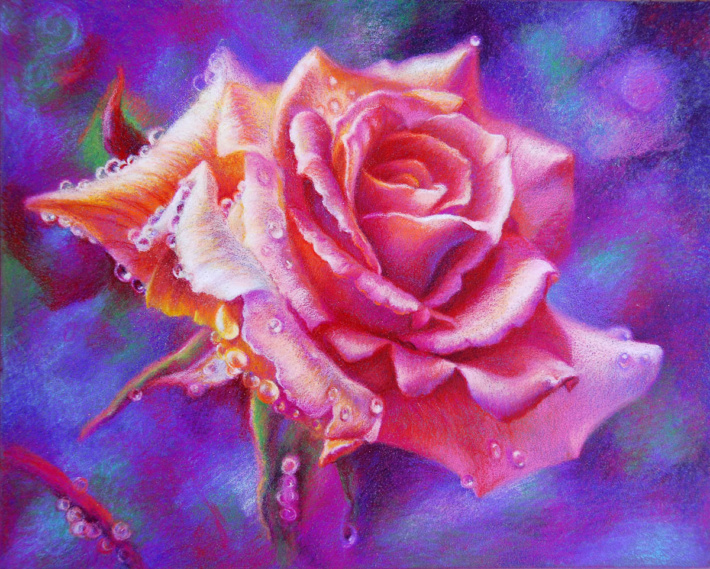
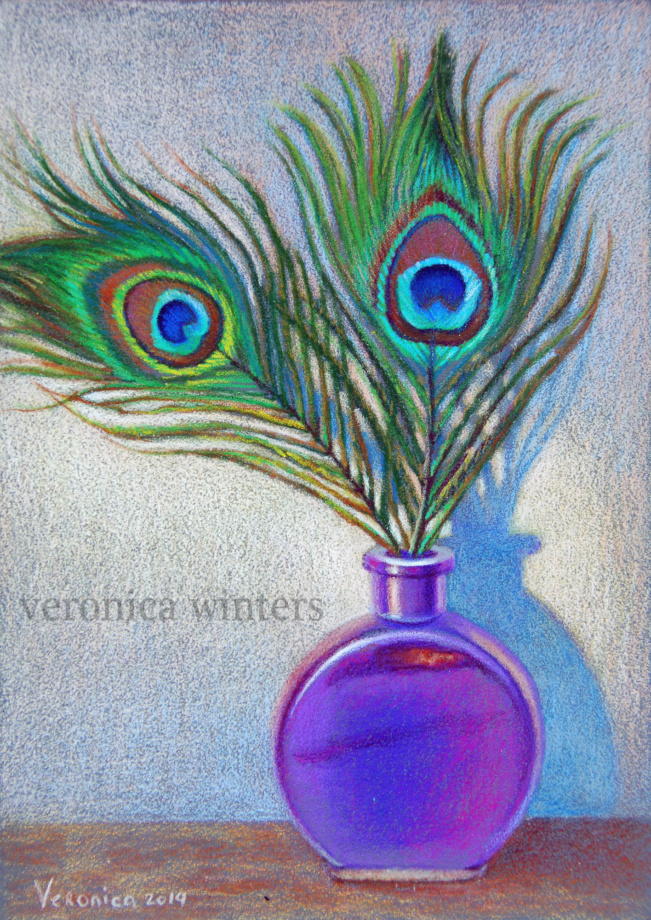
Art Supplies:
Colored Pencils:
- Prismacolor 36: https://amzn.to/3PdrdvY
- Pablo 30: https://amzn.to/3c018Cg
- Polychromos: https://amzn.to/3yoTxF1
- Luminance: https://amzn.to/3P7lkBf
- Caran D’Ache full blender: https://amzn.to/3RkCBrO
Drawing paper:
- Bristol Vellum white paper: https://amzn.to/3nJxeVN
- Canson colorline toned paper: https://amzn.to/3yLd9EO You can buy a wide selection of paper at Dick Blick Art Supplies
- Colourfix primer: https://amzn.to/3WLDdbx
Spray fixative for drawings:
- Sennelier: final fixative https://amzn.to/3yqLOq8
- Grumbacher: working fixative https://amzn.to/3bL7k0X
- DON’T buy the Krylon spray!
Other art supplies:
- Transfer paper: white https://amzn.to/3Ittcu7
- black https://amzn.to/3OSTnN5
- Gamsol: https://amzn.to/3yP8nGr
Tombow mono eraser: https://amzn.to/3yOVmMT
I’m an Amazon affiliate. You can find these brands at other art supply sites as well.
